We’re traveling on the road in our RV again, leaving Wister State Park in Oklahoma after an enjoyable, chilly, three-night stay. We stopped in Heavener, Oklahoma, to get our damaged and repaired tire back on the RV and found ourselves traveling from the Choctaw Nation to Route 66.
It was a quick swap, but it was the first time I’d ever entered a garage while sitting at the dining table of my “home.” The dogs and I sat comfortably in the RV while it was jacked up and the tire replaced.
The Choctaw Nation of Oklahoma Capitol Museum
163665 North 4355 Road
Tuskahoma, OK 74574
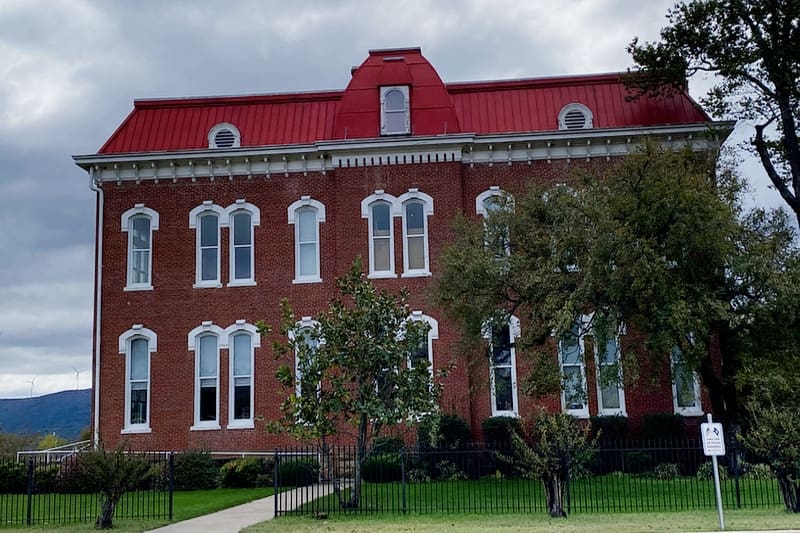
Tuskahoma was not on our direct route toward Kansas, but we wanted to take a little detour to visit here. This Museum is in a beautiful 1884 red-brick building at the Choctaw Nation’s Capitol in Tuskahoma, Oklahoma.
It is on the National Register of Historic Places, and this location has been the Choctaw Nation Capitol since 1907.
The grounds here are beautifully landscaped, and sculptures are positioned around the property.

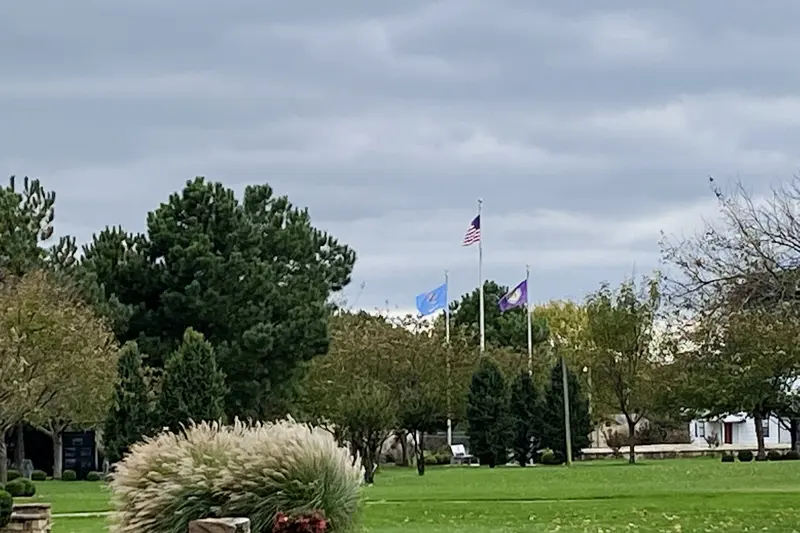
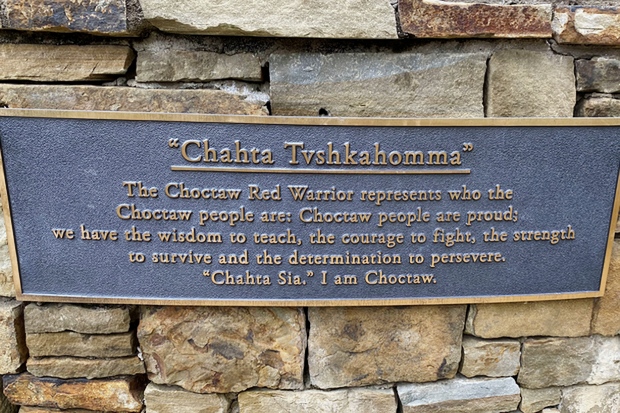
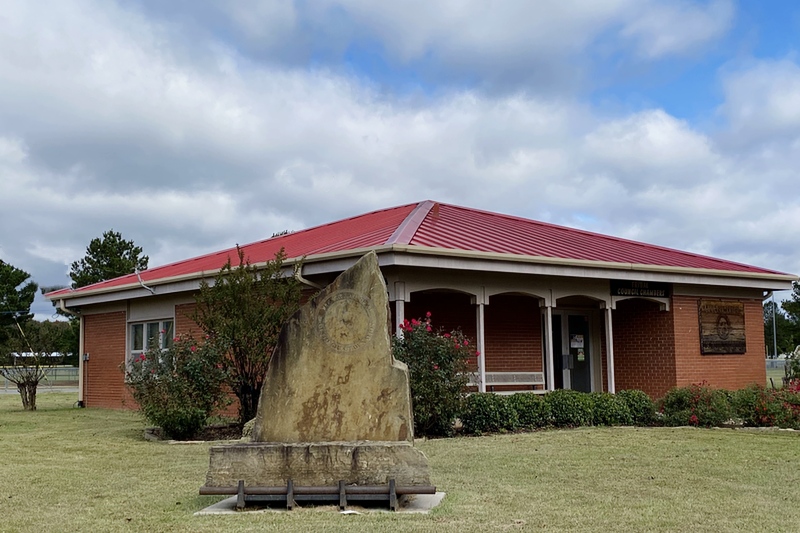
We were a bit nervous about pulling into the museum grounds in our RV, towing the Jeep. Steve must always be aware of what is ahead of us and be sure we have space to turn around. We cannot back up the RV unless we detach the Jeep.
It would be a pain in the neck to find yourself at the end of a dead-end street with nowhere to turn around. It hasn’t happened yet, but I am sure it will! I called ahead of our arrival to find out the parking situation and learned we would have to pass under an archway at the entrance.
We recommend always checking ahead when traveling in your RV to avoid surprises at your destination. Our RV is well under the height limitation, and we could park in a pull-through spot for a few hours at the RV park on the property.
Steve and I thought it was odd that the small but very nice RV park is available for camping only to vendors and participants at the Labor Day Festival held here annually. We would have loved to stay here on the grounds.

The Choctaw Nation holds a huge five-day Labor Day Festival yearly (except this one, of course). The Festival provides a carnival, arts and crafts vendors, great food, headliner music, a Princess contest, sports competitions, Choctaw heritage activities, and so much more.
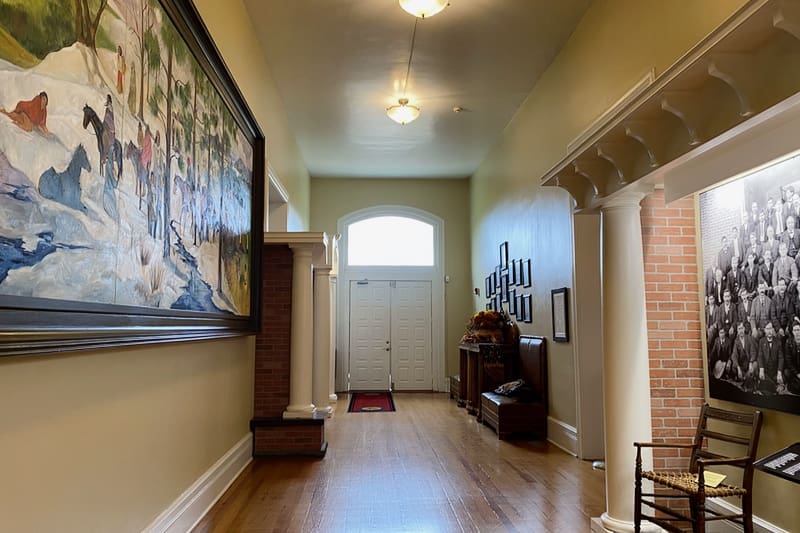
I am part Choctaw and have my Tribal Membership Card for the Choctaw Nation of Oklahoma. I have always wanted to visit this Museum, which probably explains my interest in the Choctaw nation and its history.
Also, I had been told my grandmother, Lela Peters McAlvain’s handmade Indian dolls, were exhibited at this Museum. The museum attendant that greeted us at the door to the museum told us the exhibits were continually being changed, and I was disappointed to discover these dolls were not on display.
Nonetheless, this Museum is an excellent testimonial to the Choctaw people. It contains early Choctaw history, including the Trail of Tears, the Lighthorsemen, the Choctaw Code Talkers, and much more.
We could have spent much more time here and will surely return to visit. Social distancing is strictly enforced.
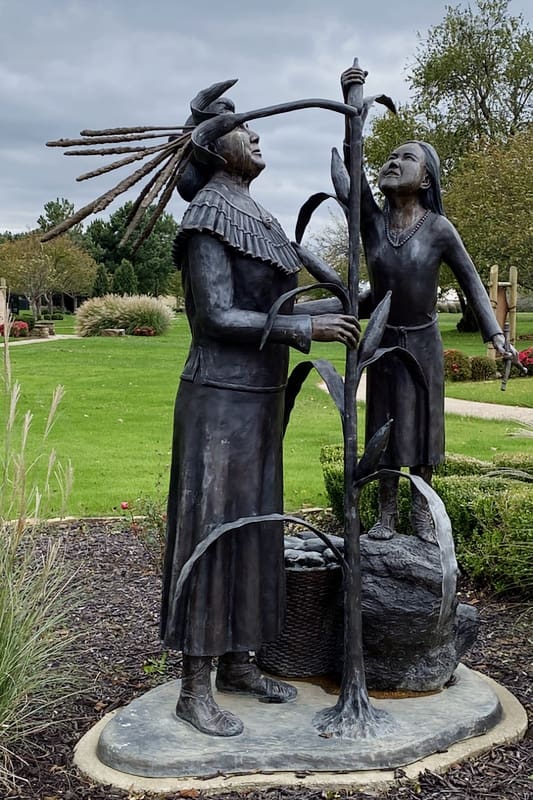
Choctaw Nation and Trail of Tears
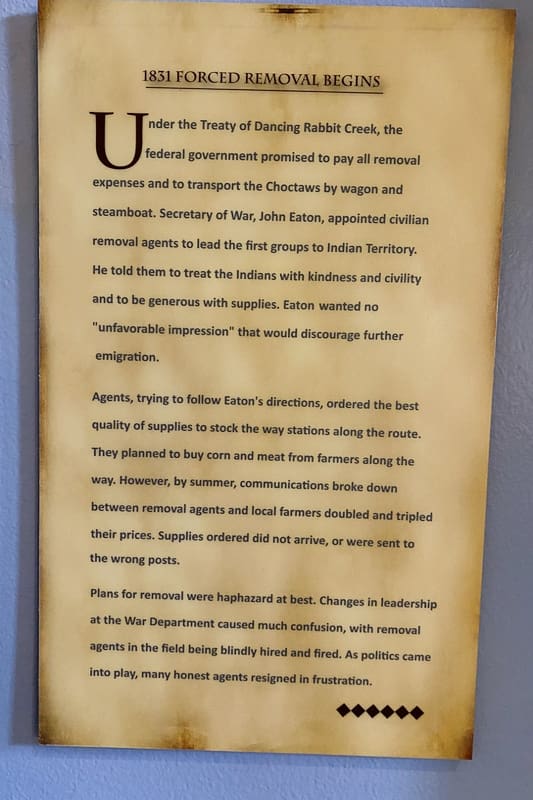
Under the Treaty of Doak’s Stand in 1820, the Choctaw Nation agreed to give up the rich cotton lands it held east of the Mississippi River. As compensation, they received 13 million acres in southeastern Oklahoma.
Most Choctaws stayed in their homeland for another ten years until the Indian Removal Act of 1830, signed by Andrew Jackson. This Act allowed the federal government to effect the removal of Indian Tribes from their homeland to what is present-day Oklahoma.
The removal took over three bleak years and ended in sickness, starvation, and many deaths. The removal forced the Indian Tribes to travel on foot without provisions. I cannot imagine the grim and harsh conditions my ancestors were required to endure.
Each year in May, the Choctaw Nation holds a memorial walk to symbolize this tragic historical event. I have participated with my siblings at least twice over the years. The actual Trail of Tears, which includes all Tribes, is over 5,000 miles long.
It crosses through Alabama, Arkansas, Georgia, Illinois, Kentucky, Missouri, North Carolina, Oklahoma, and Tennessee.

Those tribal members that survived the walk to Oklahoma had to apply to the Dawes Commission for enrollment and land. Over 100,000 were approved and entitled to a homestead “piece” of land.
The Dawes Roll is still the basis today for determining tribal membership for the Cherokee, Creek, Chickasaw, Seminole tribes, and the Choctaws. Applicants must prove they descended from a person listed on these rolls.
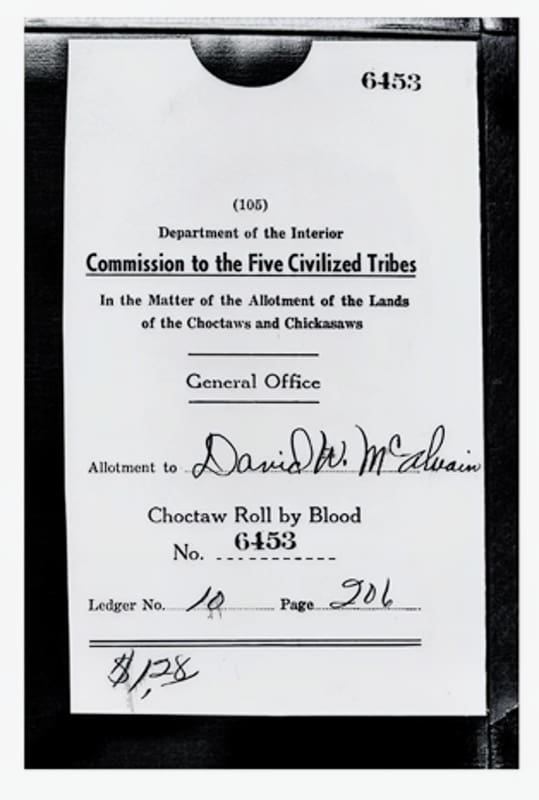

My grandfather, David McAlvain, and my great-grandfather, Polk McAlvain’s, Allotments of Land and Choctaw Roll Number
Over the years since the Trail of Tears, the Choctaw territory was threatened by federal legislation intended to weaken Indian governments. During the 1960s, Congress restored many rights of Indians in Oklahoma, and in 1984 the Choctaw Nation adopted its new constitution.
Today there are over 200,000 Choctaw Tribal members worldwide. This third-largest tribe in the United States is led by Chief Gary Batton, Assistant Chief Jack Austin Jr., and 12 Tribal Council members.
Choctaw Nation Code Talkers
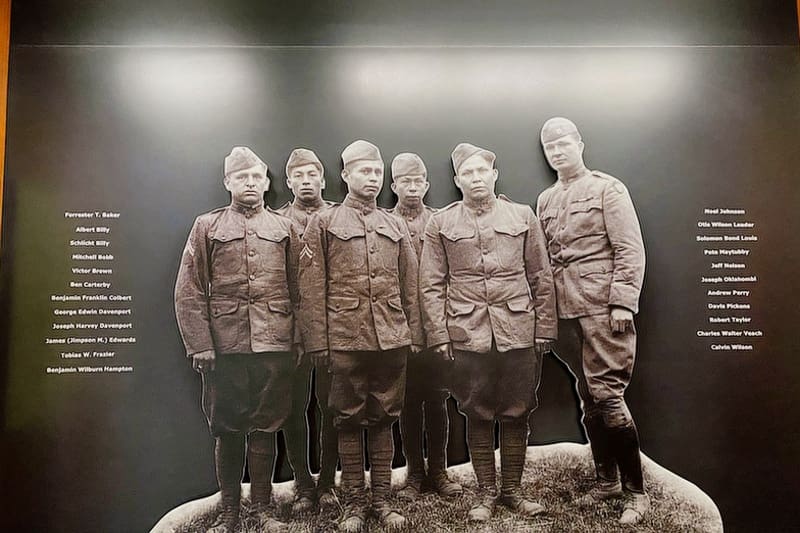
One of the most exciting and impressive exhibits we saw was the Code Talker exhibit, which includes a powerful video presentation.
During World War I, in the Meuse-Argonne Offensive on the Western Front in 1918, German enemy forces compromised the American soldiers’ communications. This had become a huge problem.
An American Captain overheard two Choctaw soldiers talking to each other in their native Choctaw language. He realized this “secret” language’s potential, and the Choctaw Telephone Squad and code talking were born.
Choctaw was not widely spoken outside of its Tribe and was rarely written down. It was a perfect language to mask sensitive communications.
I learned that while the heroic Code Talkers were using their native language to help win the war in Europe, the children of Choctaw families back in Oklahoma were being severely punished for speaking this same native language.
Our government was attempting to assimilate Choctaw children into civilized ways! How sadly ironic.
We very highly recommend visiting the Museum. It is chock full of history and stories, beautiful and heart-wrenching.
Heart of Route 66 Auto Museum
13 Sahoma Lake Road
Sapulpa, Oklahoma 74135
Tue – Sat: 10:00 am – 4:00 pm
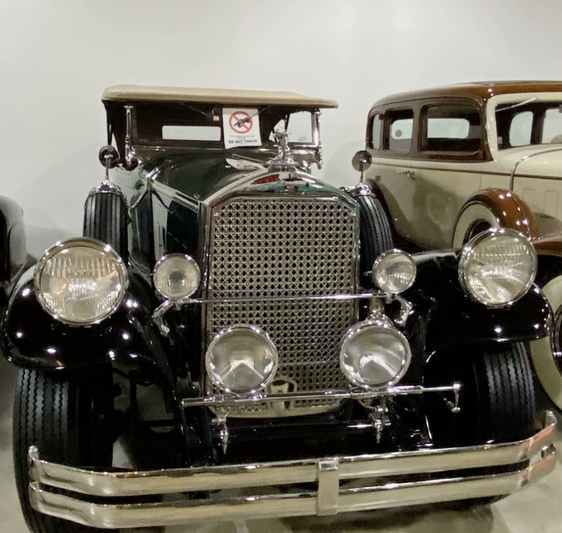

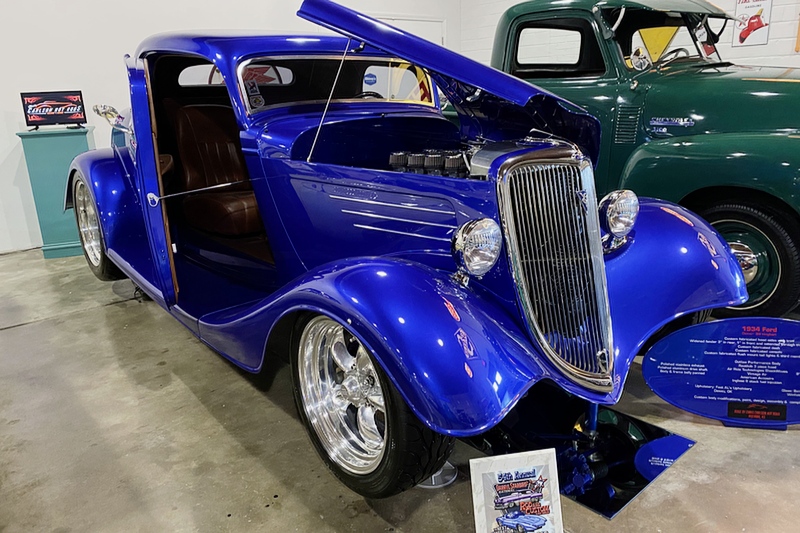
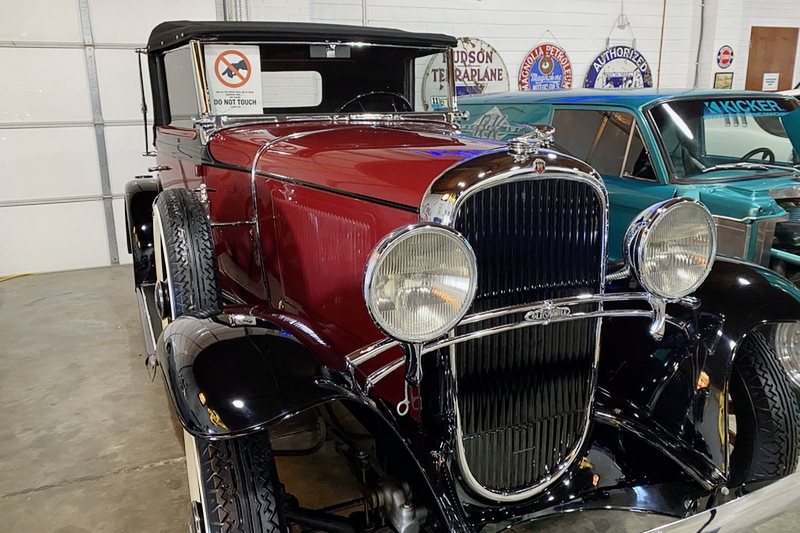


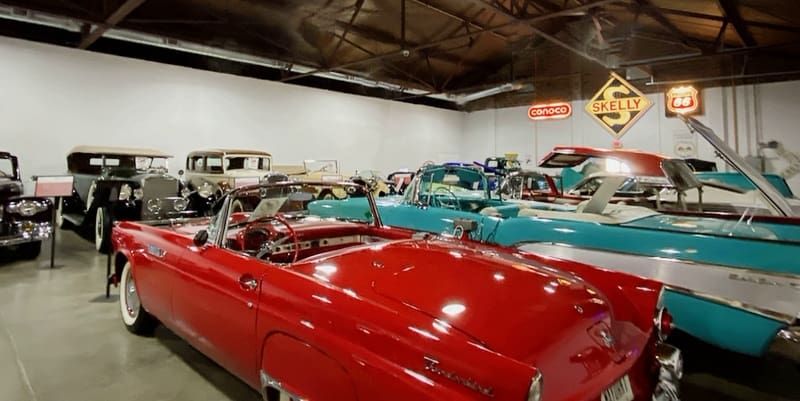
We finally started to head north. Our next stop was Sapulpa, Oklahoma, where we had a reservation at an excellent Harvest Host location. Another RV was already parked in the spacious lot when we arrived.
We introduced ourselves to our neighbors for the night, a lovely young couple traveling with their shiny new baby and their family dog. The young lady is a traveling nurse. They were on their way to her job assignment and are living full-time in their RV.
We always enjoy the stories we hear from our “just passing by” neighbors. This couple had a unique story about the great adventure they’re living right now.
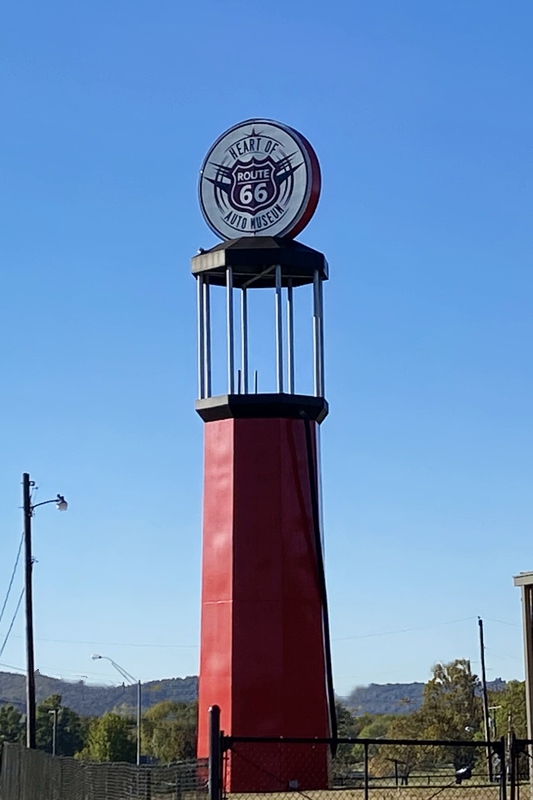
You will have no trouble finding this Museum. The world’s largest gas pump is sitting right out front. We did not know what to expect when we entered the Museum. You reach the Museum through the great little gift shop at the front.
This Museum, as I should have guessed, houses vintage cars, over 10,000 square feet of vintage cars! There are also motorcycles in the Museum and tons of fascinating car memorabilia. Masks, hand sanitizer, and social distancing are strictly enforced here also.
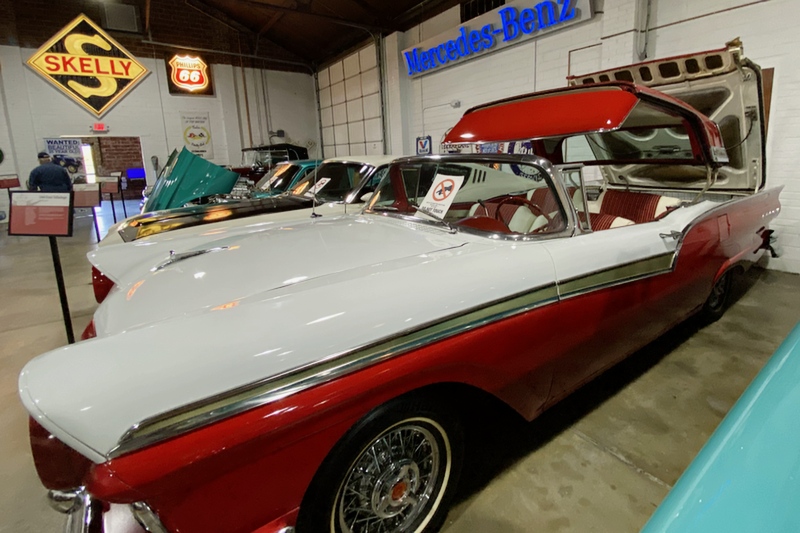
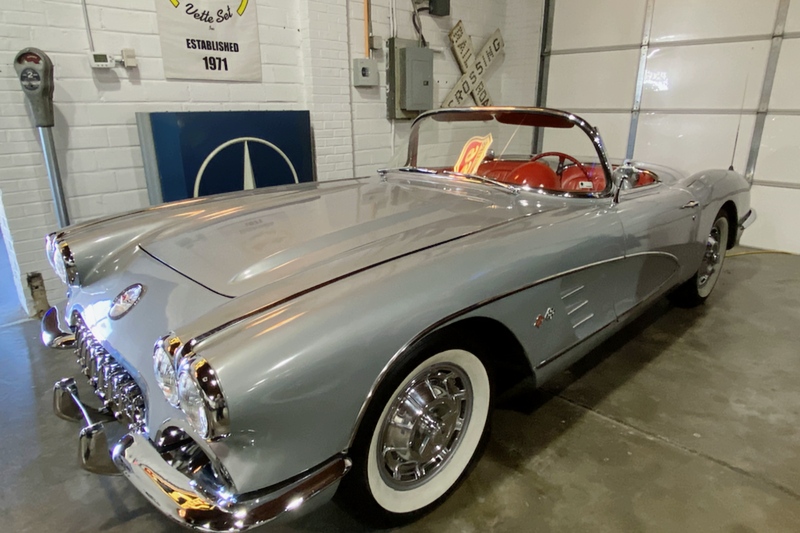
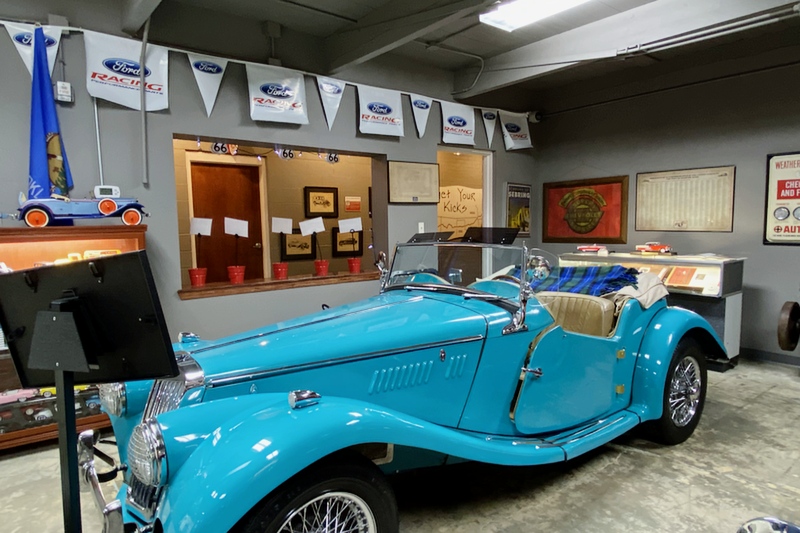
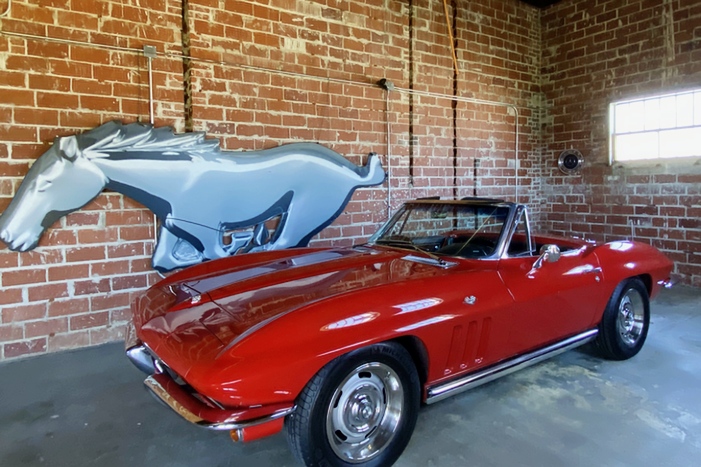
This is a not-for-profit museum put together by a group of car enthusiasts. The vehicles are all waxed to a nearly blinding shine. I could not help but wonder about the quantity of wax consumed in this building.
The vehicles are beautifully displayed, a joy to look at. The people we talked to at this Museum were friendly, full of information, and able to answer all questions we asked. We had stopped once before along Route 66 in Shamrock, Texas.
We are now very interested in traveling along the entire length of Route 66 – to see what we can see.
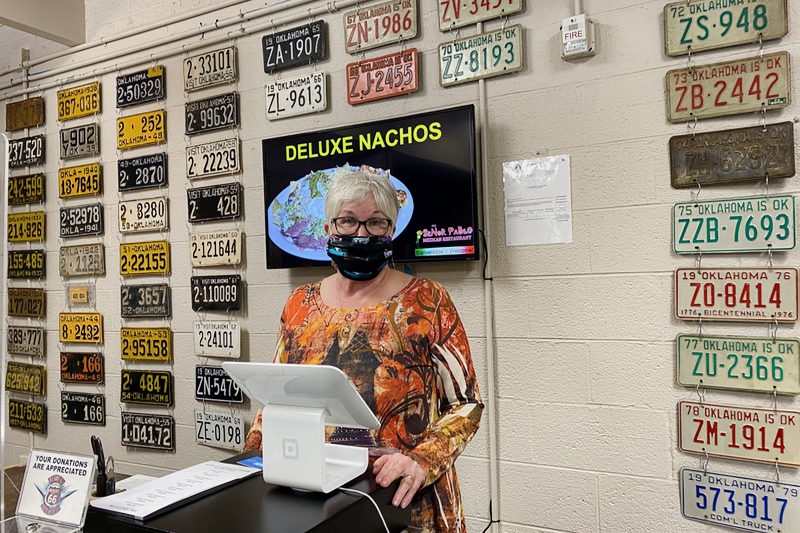
Loretta gave us a great introduction to the Museum
We spent just one night in lovely Sapulpa. After a quick grocery store stop and one of our frequent gas fill-ups (eight miles per gallon!), we FINALLY headed to Kansas!

Looks like she is ready to ring you up to buy one of those cars…….I’ll take the red and white hard top convertible!
Actually, we were buying postcards, but yeah, I’d take the red and white hard top convertible too.